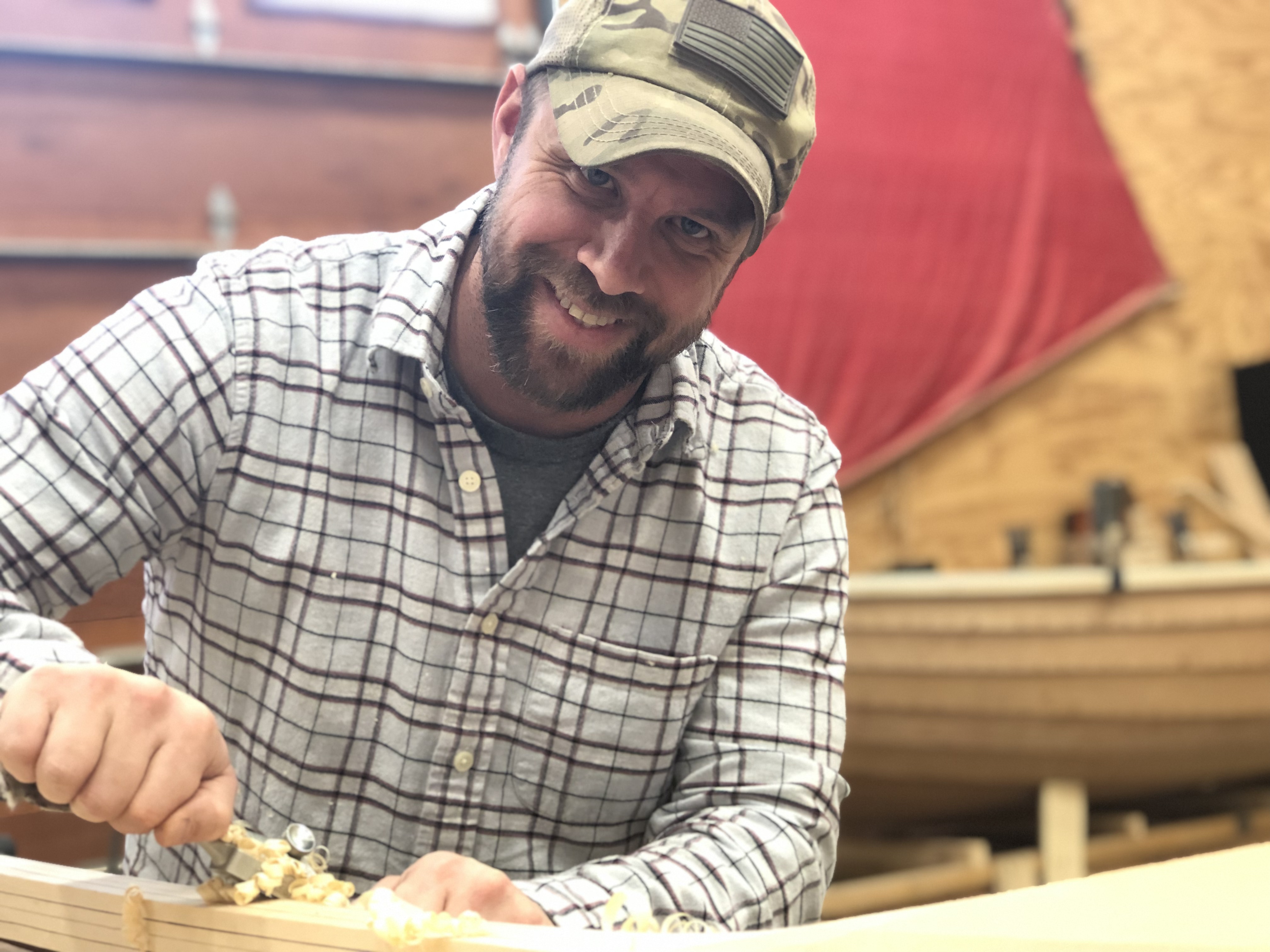
Learning Curves…The “Sweetheart Skiffs”
By: Patrick Mahon, Education Director
Over the years, we have built many small skiffs as the fi rst boat building project for our first-year students during Session One. After completing their classic woodworking projects and learning the lofting process, the skiff introduces simple boat building concepts and skills. Some of the designs we chose in the past proved to be more complicated than intended, so this year we went back to the basics. The fl at bottom skiff offers the fi rst time builder the opportunity to put his or her new skills to the test and can be fi nished in time for Winter Break.
There are numerous designs available for a fl at bottom skiff, many of them like a type of regional work boat and vary, according to use and place, in size and shape but there are similarities. We looked at several styles and decided to simply draw our own, using several published designs as a guide.
We built two skiffs, each at a useful 12 feet, four inches in length, with a beam of four feet, six inches. The bottom is nearly as wide and carries the beam to the transom to support a small outboard motor. An eight- to ten-horse motor should get the little boat up on plane and provide a steady ride.
Construction of each boat began with the lofting from our plan and then making the temporary molds that shape the hull. A solid oak stem attaches to the plywood bottom and the cedar transom is also fastened to the bottom along with a stout oak knee. The hull sides are made with three lap-strake planks per side screw, fastened at the stem and transom, and clench nailed to each other at the laps. The planking is ¾ inch local cedar. In most lap-strake construction, the laps are joined by beveling the underlying plank to accommodate the angle between the planks. To give the boat a little less chunky look, we chose to use a “dory lap” which reduces the ¾-inch thickness of plank exposed by half. This is done by beveling both planks; the underlying plank is beveled on its outer-upper edge and the overlaying plank on the inner-lower edge. This also gave each of the two crews another challenge, as the two bevels need to be made carefully to achieve a tight fit.
The hulls were fitted out with five, sawn oak frames per side, oak breasthook and quarter knees, and three sturdy thwarts. Iroko, an African hardwood, was used for the rub rails. The finish is paint throughout.
Why am I calling these new skiffs the “Sweetheart Skiffs”? Early on, the two student crews decided to name their skiffs Pedro and LaFawnduh. Those were the names of the mismatched lovers in the movie, Napoleon Dynamite. One of the skiffs, Pedro, painted with a white exterior, gray interior and blue bottom, was displayed at the E. J. Mertaugh Boat Works in Hessel this winter, courtesy of Brad and Shelley Koster. LaFawnduh also has a white hull, but with a tan interior and red bottom. Both come with a custom-made pair of varnished oars.
These little boats are available now at $1500 each. At that price, someone could buy both, in order to keep Pedro and LaFawnduh together forever!




